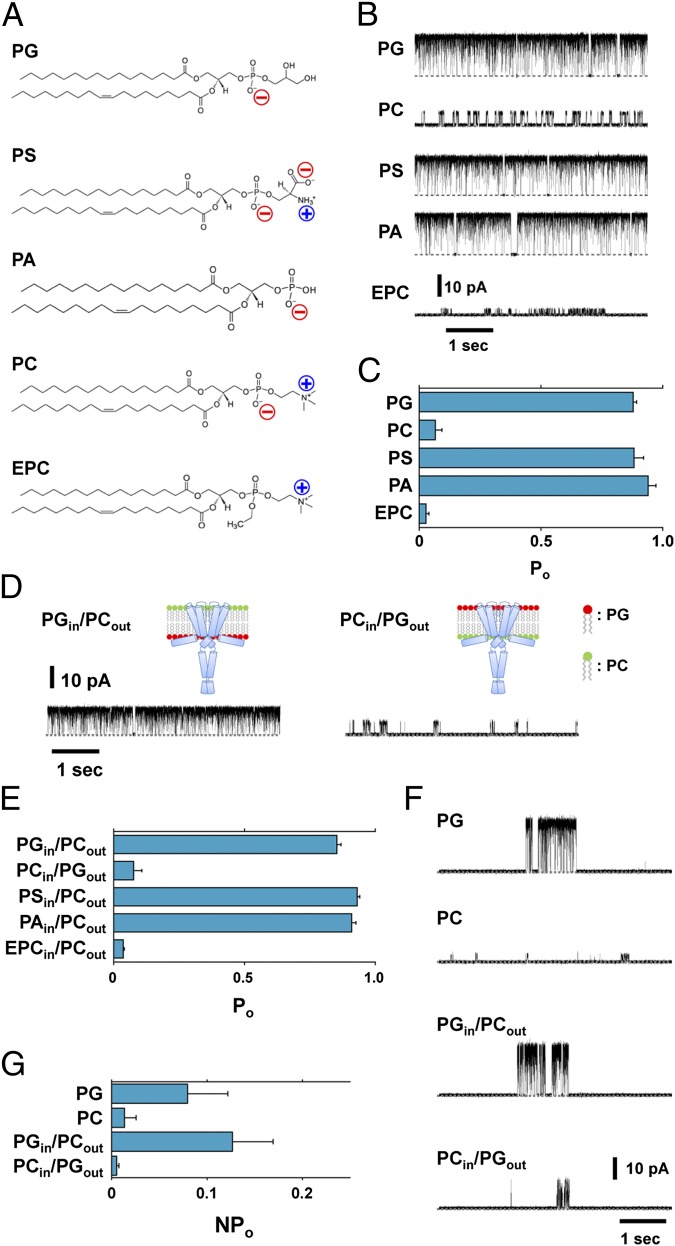Fig. 1.
Functional effects of membrane lipids on the KcsA channel. (A) Chemical structure of the phospholipids used in this study. (B and C) Single-channel properties of the E71A mutant having different lipid compositions. (B) Single-channel current recordings of different (symmetric) membrane compositions at +100 mV. (C) Open probability in the symmetric membranes. Error bars represent SEM (n = 3–6). (D) Single-channel current recordings in asymmetric membranes at +100 mV. (E) Open probability in asymmetric membranes. Error bars represent SEM (n = 3–8). (F and G) Single-channel properties of the wild-type channel in different membrane compositions. (F) Single-channel current recordings in different (symmetric) membrane compositions at +100 mV. (G) Open probability (Npopen rather than popen) of different compositions of lipids for the WT channels. Error bars represent SEM (n = 3). In these experiments the KcsA channels are oriented such that the cytoplasmic side faces the trans compartment. The solution of each chamber contained 200 mM KCl and the pH was set to 7.5 (cis) or 4.0 (trans). The membrane leaflet that faces the cis compartment is defined as the outer leaflet and that facing trans is the inner leaflet.

